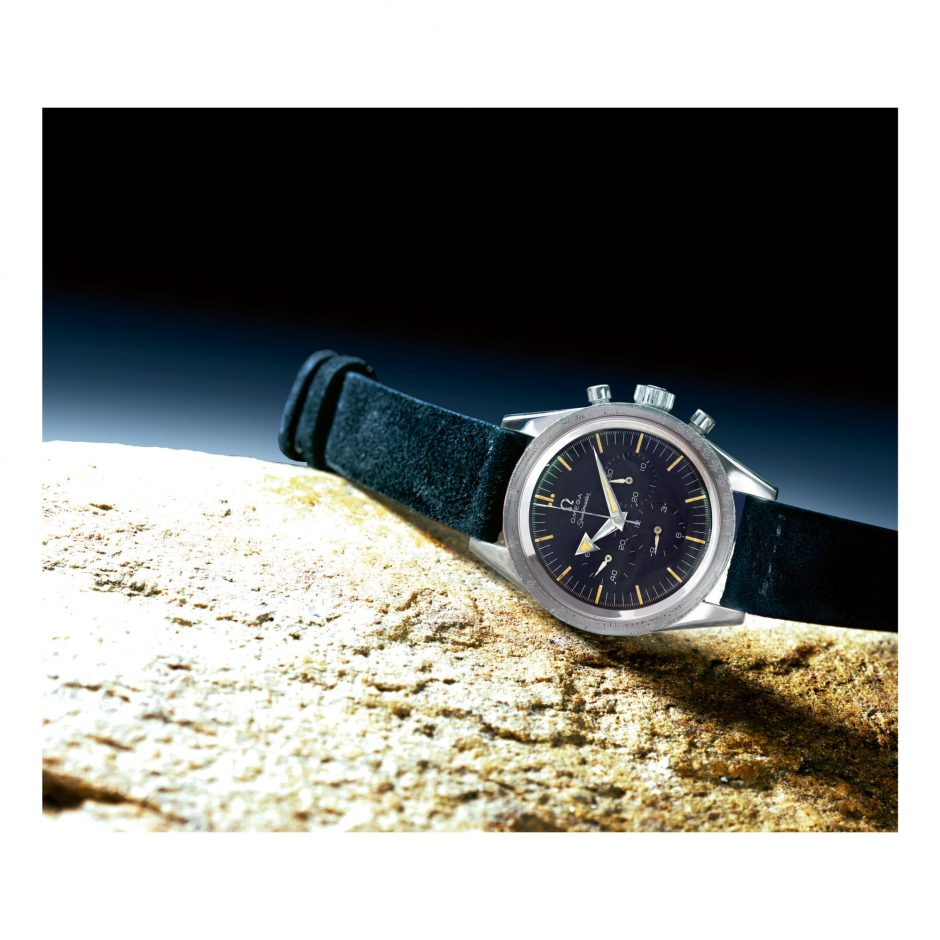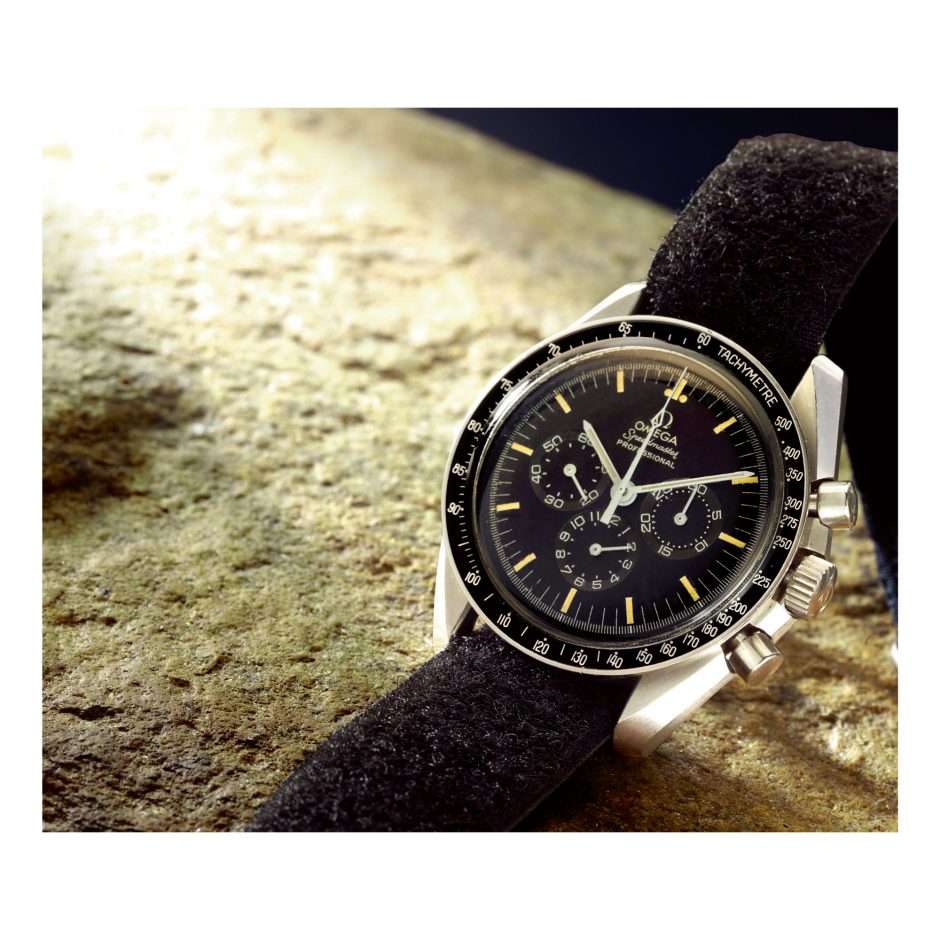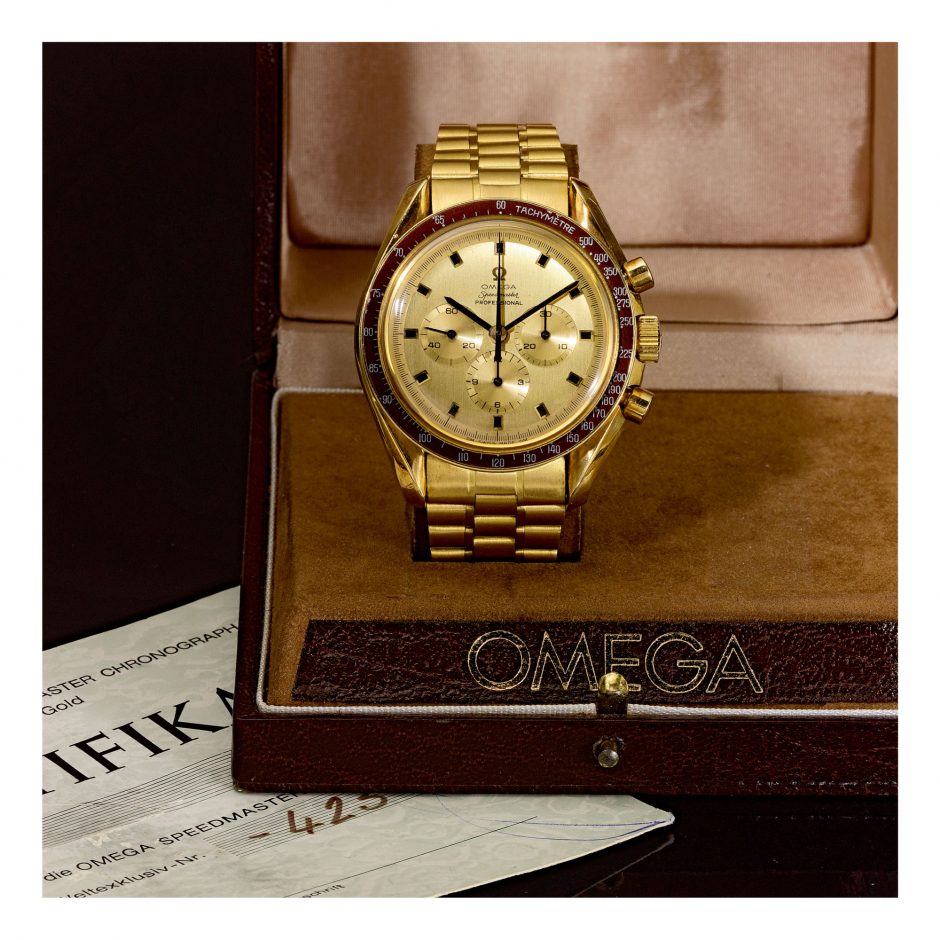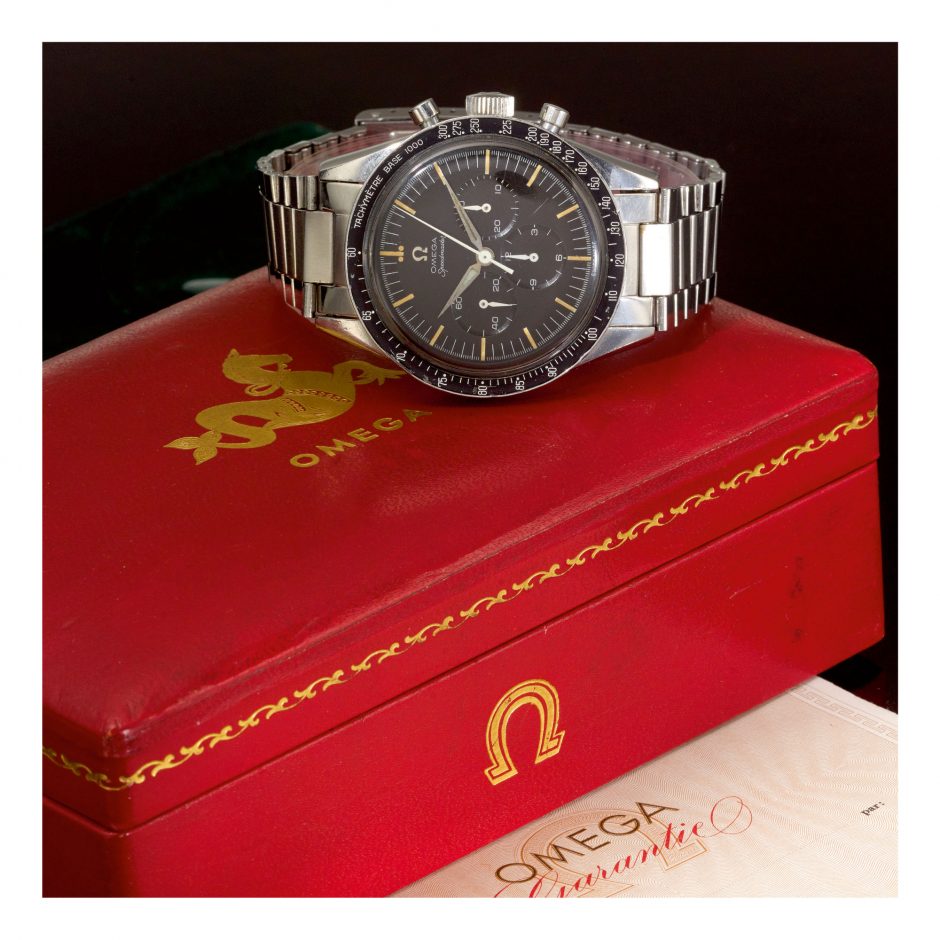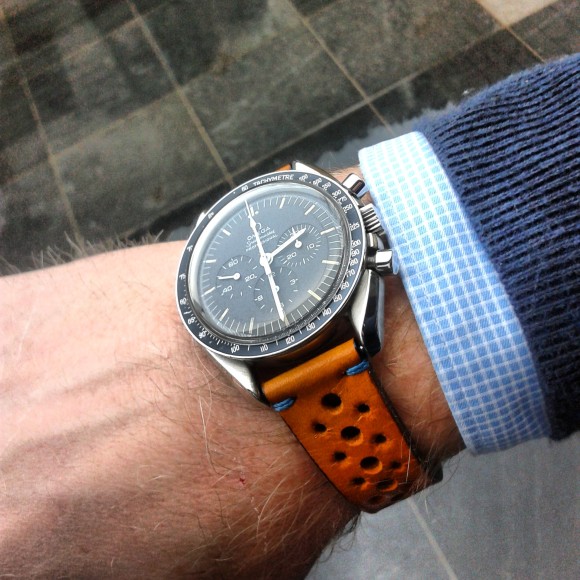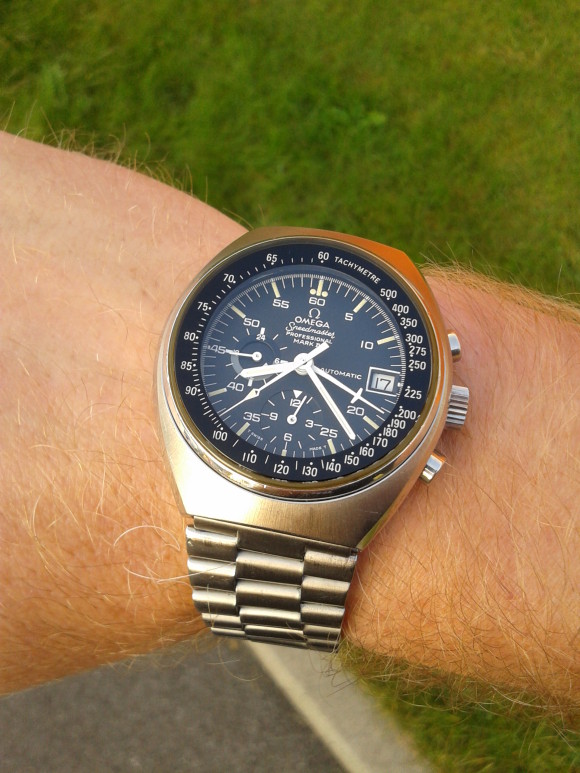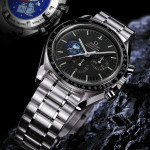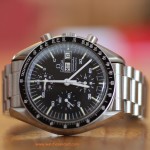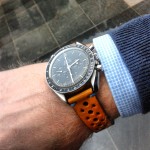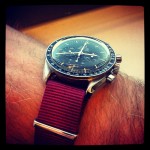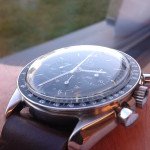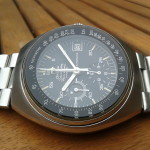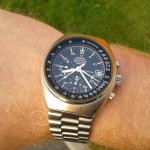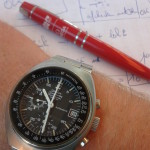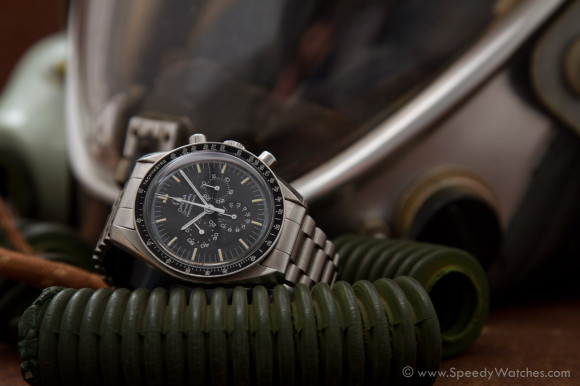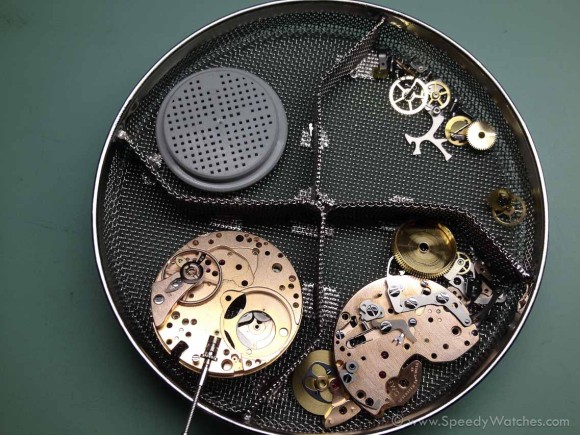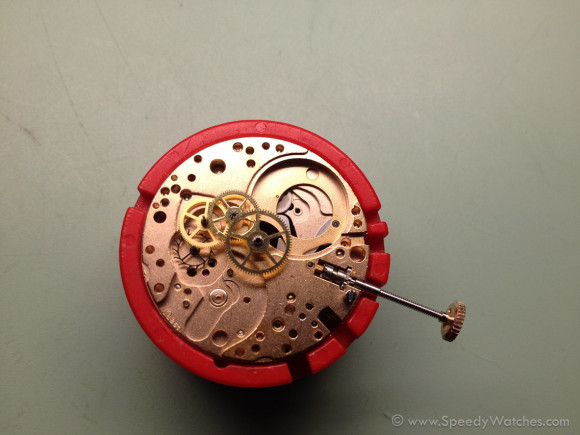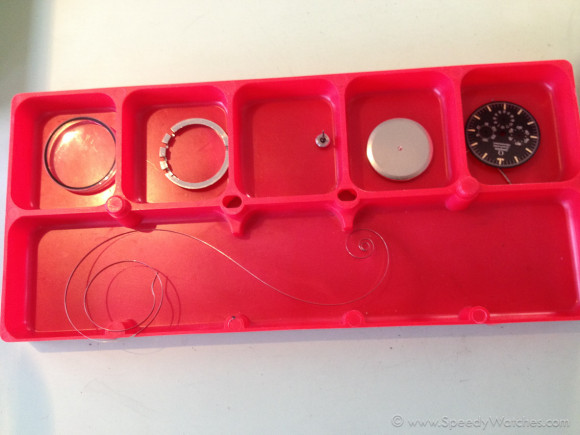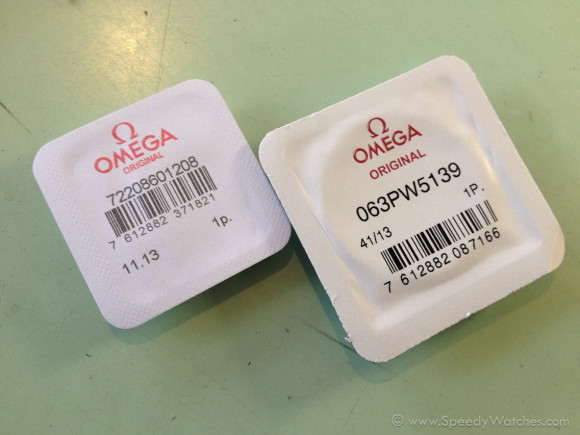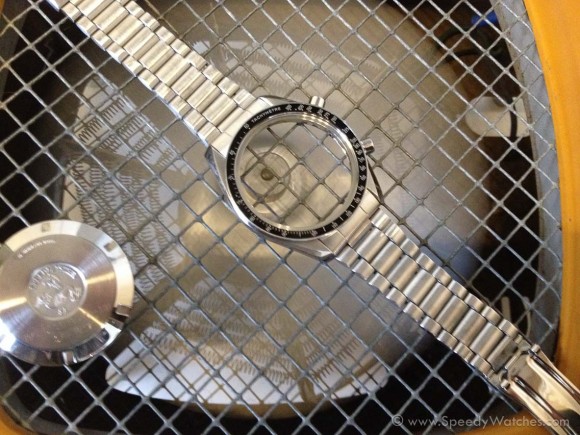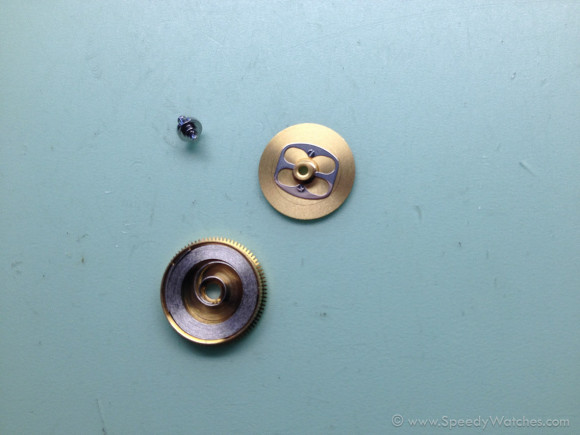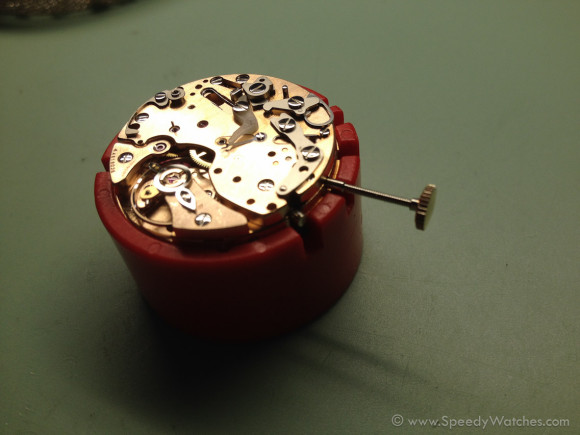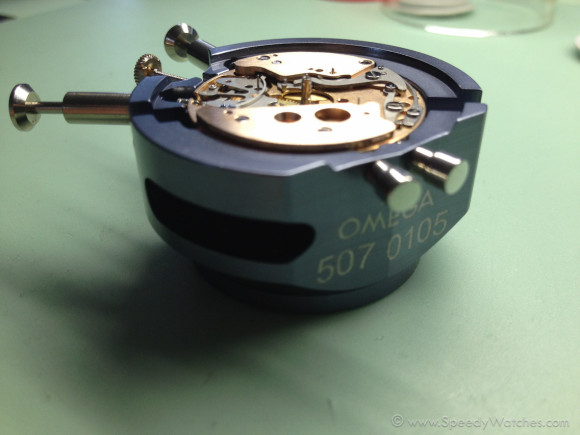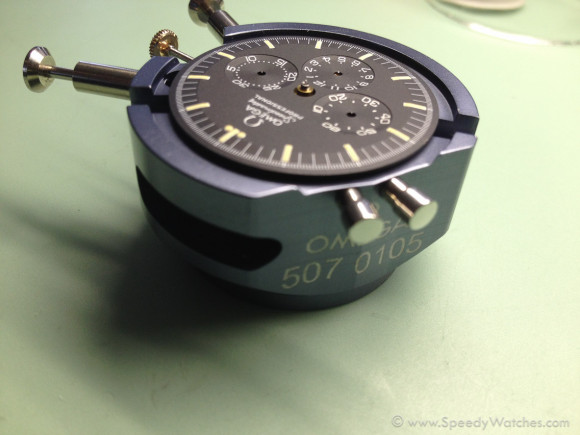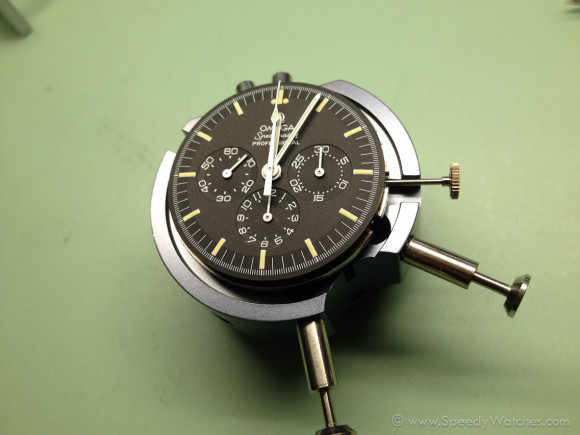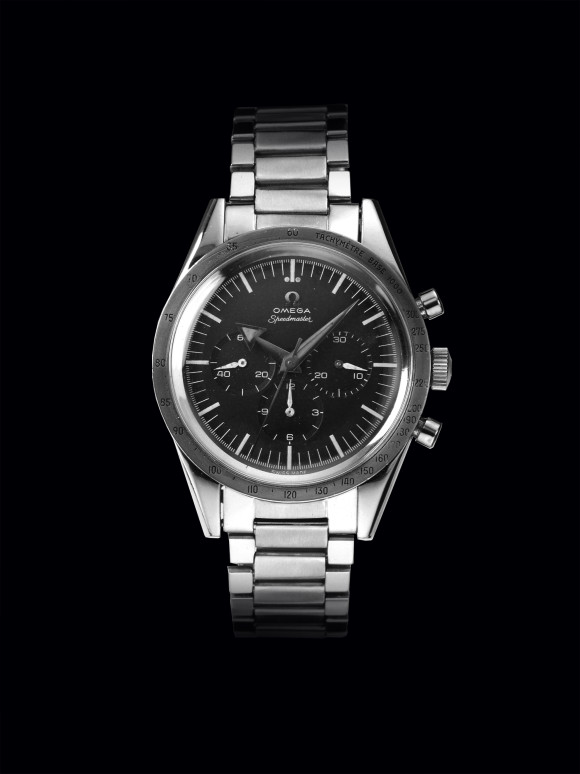
Omega Speedmaster CK 2915
1. Omega Speedmaster – 1st generation (1957)
The OMEGA Speedmaster is a definitive candidate for the most famous chronograph in the world. Without any doubt it also is the world’s most important one. Selected by astronauts, tested and certified by NASA and worn on the moon – it has credentials that no other watch can boast.
It all started rather inconspicuously in 1957, the year OMEGA introduced its “Professional” line of watches that included the Seamaster 300, the Railmaster and the first Speedmaster. Conceived not for extra-terrestrial use but rather for an earthly desire – speed – the very first Speedmaster, the CK 2915, was intended for and marketed to car enthusiasts, motorists and racing drivers. Its tachymetric bezel placed – for the first time ever – outside the dial and crystal and designed to form part of the exterior case design, was yet another world premiere in OMEGA’s long list of achievements. Powered by the legendary manual-wound calibre 321, defined by the graceful lines of its symmetrical case design and proudly displaying time with hands featuring a “Broad Arrow” hour-hand, the Speedmaster became an instant bestseller.
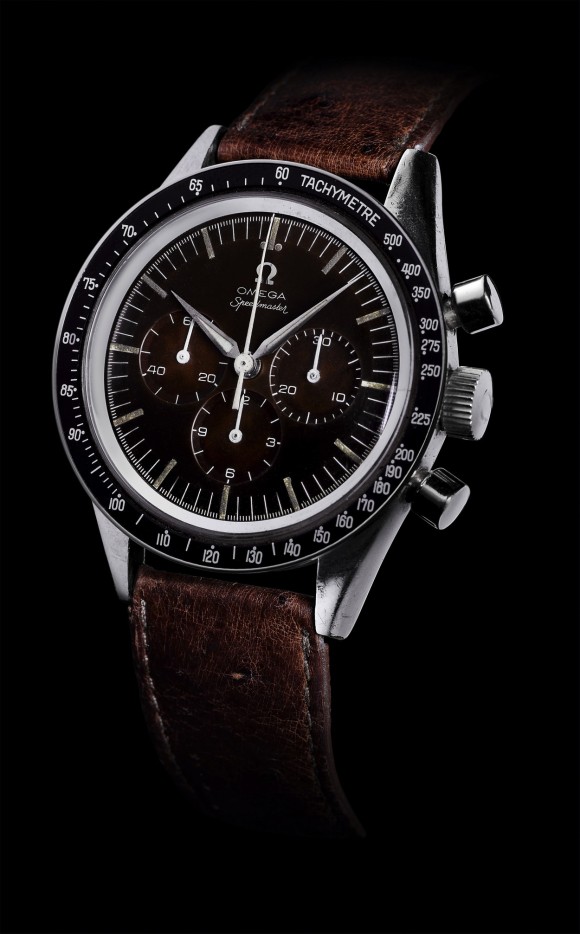
Omega Speedmaster CK 2998
2. Omega Speedmaster – 2nd generation (1959)
1959 saw the introduction of a revised Speedmaster model, the CK 2998. While the symmetrical case and the calibre 321 were retained, new “Alpha” design hands replaced the ones found on the first model. The tachymeter bezel was also standardized in the black aluminium version still in use today. The CK 2998 was the very model purchased by Mercury astronauts Walter “Wally” M. Schirra and Leroy G. “Gordo” Cooper in 1962 as their private watch. It was worn by Schirra during his Mercury-Atlas 8 (Sigma 7) mission, becoming the first OMEGA Speedmaster worn in space, a full two years before NASA’s now-famous tests that led to the official selection of the Speedmaster for use in all of NASA’s manned missions.
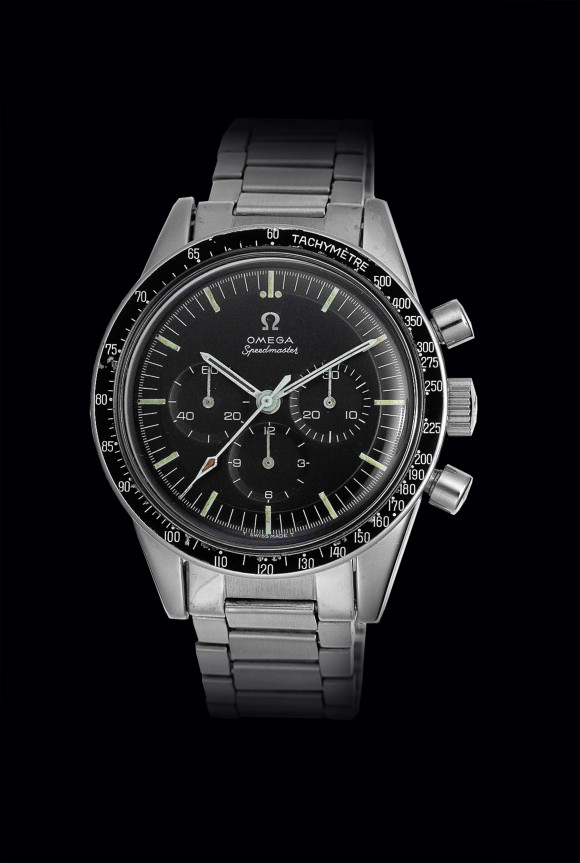
Omega Speedmaster ST 105.003
3. Omega Speedmaster – 3rd generation (1963)
The next development within the Speedmaster family was a decisive one. Introduced in 1963, and powered by the manual-wound calibre 321, the ST 105.003 is the exact model delivered to and tested by NASA. Responding to a request for wrist chronographs in October 1964, OMEGA’s North American agent furnished NASA with the required number of ST 105.003 Speedmasters, without knowing exactly what they would be used for and without informing OMEGA headquarters in Biel, Switzerland. These watches, as well as models from other competing brands, were tested almost to destruction in a series of tests that can justly be described as the toughest trials a watch had ever endured. Emerging victorious and functioning within the required specifications as the sole watch that had not suffered catastrophic failures in the strenuous trials, NASA declared the OMEGA Speedmaster as “officially certified” equipment for its manned space program. Following the successful trials, NASA procured further examples of the ST 105.003 and officially equipped its astronauts with the Speedmaster. This model reached further fame when it was worn for the first time outside the space capsule: on the wrist of astronaut Edward White, this model became part of America’s first “spacewalk” (extra-vehicular activity, or EVA) on June 3rd 1965 during the Gemini 4 mission.
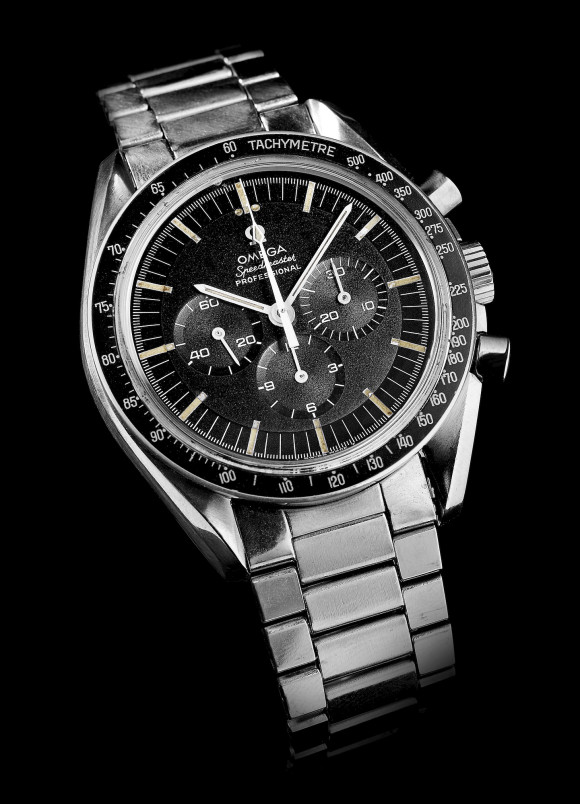
Omega Speedmaster Professional ST 105.012
4. Omega Speedmaster Professional – 4th generation // The original “Moonwatch” (1964)
While the brand had no knowledge of what was going on in Houston – indeed NASA’s selection process was carried out without involving the respective companies’ headquarters – the Speedmaster’s design was steadily evolving. In order to offer additional protection to the chronograph’s pushers and its crown, OMEGA designed a slightly altered watch case. Its right side was slightly enlarged, thus enhancing the protection. As it turned out, this “asymmetric” case would be identified the world over as one of Speedmaster’s trademark design-elements. It was introduced to select markets in 1964 with the model ST 105.012 that also featured the mention “Professional” on the dial, as it was indeed prominent part of OMEGA’s professional line of watches. Powered by the same movement, the calibre 321, the model further evolved in 1967 to the reference ST 145.012, with the addition of a slightly improved method of attaching the pushers to the chronograph’s case. This model proved to be the last one to use the brand’s calibre 321, the very movement that guaranteed perfect timing during all six lunar landings up to and including the very last mission to land on the moon: Apollo 17.
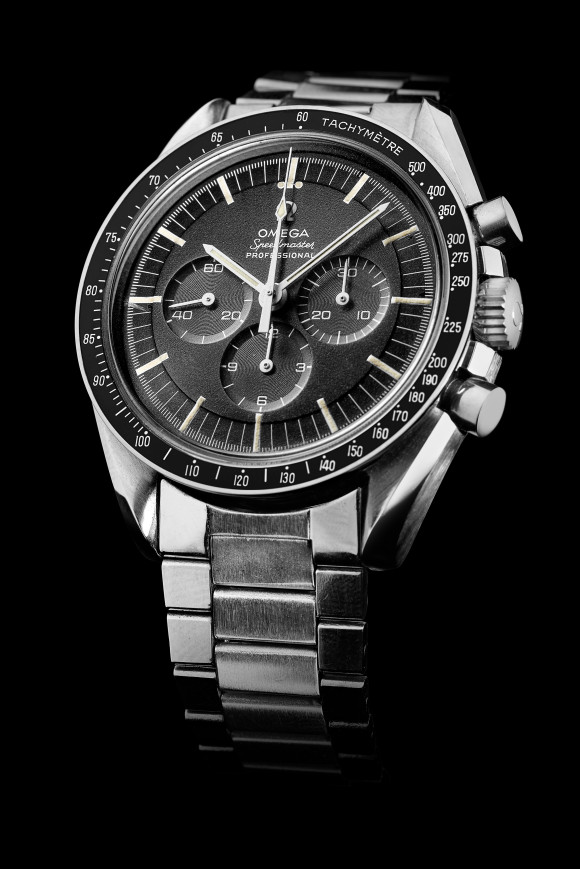
Omega Speedmaster Professional ST 145.022
5. Omega Speedmaster Professional “Moonwatch” (1968)
In 1968, one year before Neil Armstrong and Buzz Aldrin set foot on the Moon, OMEGA introduced yet another milestone in the Speedmaster’s evolution: a new movement. Bearing the reference ST 145.022, the new model was powered by the OMEGA calibre 861, the successor of the storied calibre 321. The new manual-wound movement featured several new design elements and reflected OMEGA’s advances in watchmaking technology. Incorporating some production-related improvements as well, the new movement and its succeeding versions continue to power the Speedmaster “Moonwatch” to this very day.
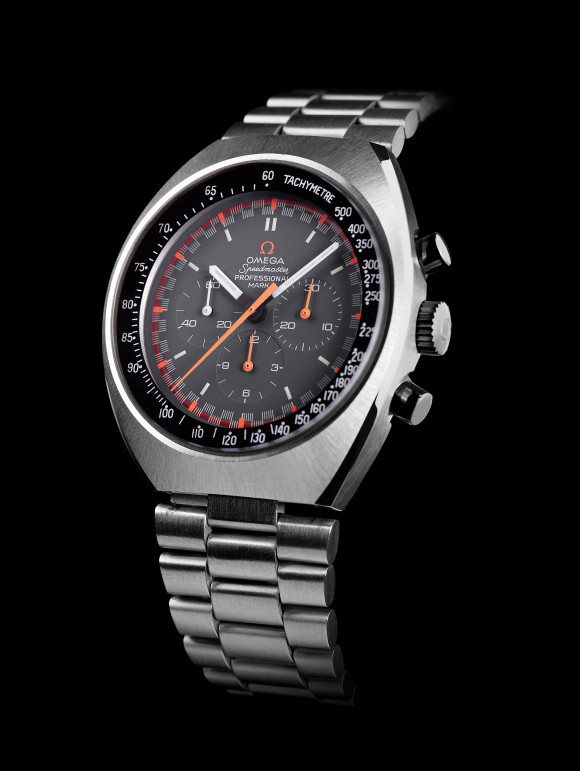
Omega Speedmaster Professional Mark II Racing ST 145.014
6. Omega Speedmaster Professional Mark II (1969)
This model marked the first redesign of the classic Speedmaster Moonwatch case, thus introducing a new or second generation of Speedmaster models into OMEGA’s catalogue. Its birth year was 1969 and the name chosen was “Mark II” to signify that it was in fact the second generation of the manual-wound Speedmaster. Offered in various distinct iterations (stainless steel with black dial, stainless steel with grey and orange “racing” and “yachting” dials, gold-plated with a gilt dial and a very rare version in 18K yellow gold) and powered by the calibre 861, the Mark II’s barrel-shaped case, also referred to as the “Pilots’ Line” case, has its roots in a rather secret (at the time) project that OMEGA was working on: a further enhanced and strengthened version of the Speedmaster for prolonged EVA-use on the lunar surface. One version of this ambitious research project that spanned more than ten years and was code-named “Alaska” featured a strengthened and well-rounded watch case with hooded lugs and protected crown and pushers. When the research project shifted directions, some of the original ideas formed the basis of the “Pilots’ Line” cases and were introduced commercially in the form of the Speedmaster Mark II and the Flightmaster.
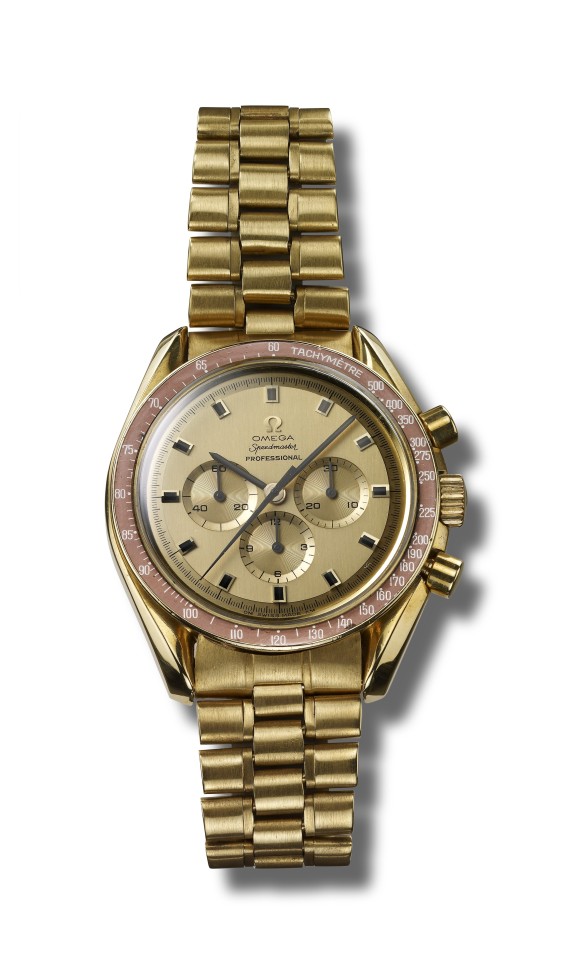
Omega Speedmaster Professional Apollo XI BA 145.022
7. A gold Speedmaster to celebrate the successful Apollo 11 mission (1970)
Created especially to commemorate the most important event of modern times, this model was manufactured be¬ginning in the autumn of 1969, first in a special series of 28 num¬bered pieces. Bearing a different inscription (“To mark man’s conquest of space with time, through time, on time”) along with the receiver’s name, it was offered to each of the astronauts active at that time at a gala dinner on November 25, 1969 at Hotel Warwick in Houston. Due to its success, a total of 1,014 of these watches were produced up until 1972.
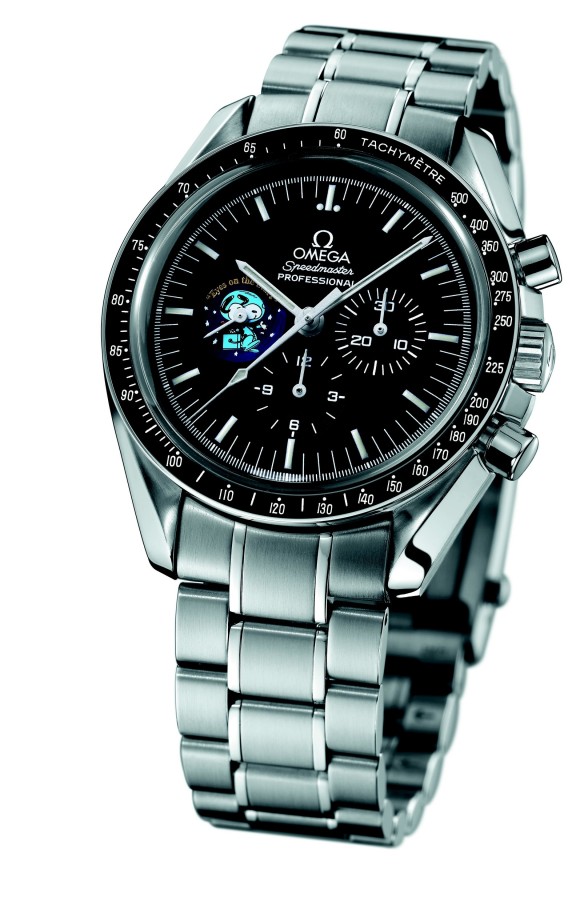
Omega Speedmaster Professional ST 145.0031 Snoopy Award
8. Omega Speedmaster Professional “Snoopy Award Limited Edition” (2003)
A special model produced as a series limited to 5441 numbered pieces to commemorate the Silver Snoopy Award presented to OMEGA by NASA in recognition of the brand’s contributions to the Apollo program.
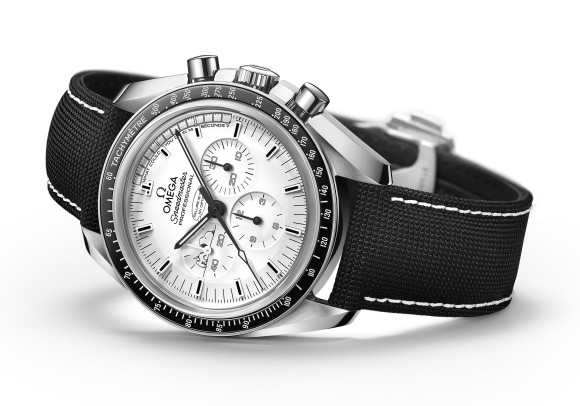
Omega Speedmaster Professional 311.32.42.30.04.003 Apollo 13 Silver Snoopy Award
9. Omega Speedmaster “Apollo 13 Silver Snoopy Award” (2015)
In 2015, OMEGA introduced the OMEGA Speedmaster “Apollo 13 Silver Snoopy Award”, a watch that pays homage to the unforgettable mission 45 years ago and celebrates the teamwork, quick thinking, ingenuity and courage that brought Commander Jim Lovell, Command Module Pilot Jack Swigert and Lunar Module Pilot Fred Haise home safely.
A closer look at the timepiece shows that Snoopy, the beloved dog from the Peanuts cartoon and a NASA mascot, decorates the dial and the caseback – a small tribute to the Silver Snoopy Award that OMEGA was presented with in 1970.
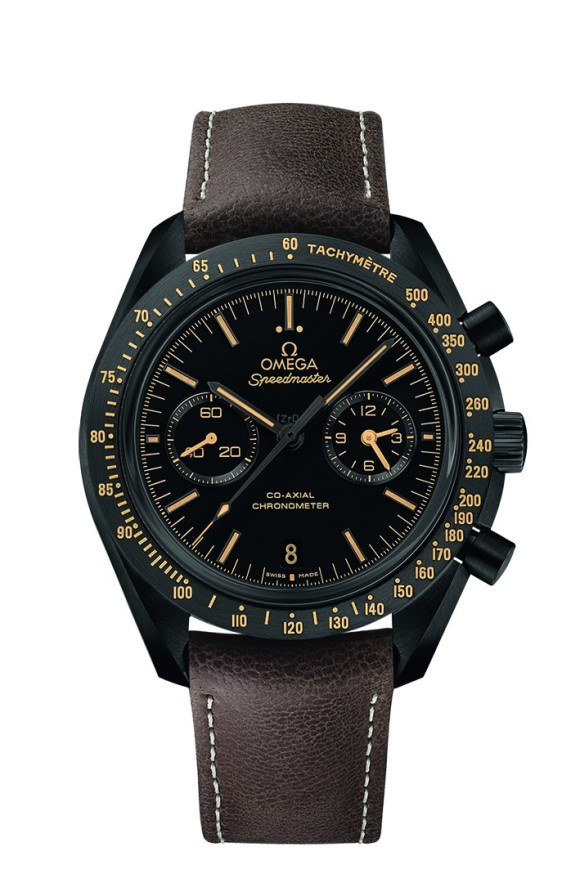
Omega Speedmaster Dark Side of the Moon Vintage Black 311.12.44.51.01.006
10. OMEGA Speedmaster Dark Side Of The Moon “Vintage Black” (2015)
Inspired by the incredible discoveries NASA astronauts made while exploring space, OMEGA launched a statement-making timepiece in 2013 that caught the attention of watch fans and collectors around the world: the ceramic Speedmaster Dark Side of the Moon. Combining the brand’s commitment to quality and innovation with its space legacy, OMEGA’s collection of ceramic watches includes now nine stunning models, one of which is known as the Speedmaster Dark Side of the Moon “Vintage Black”. These stylish timepieces are emblematic of OMEGA’s passion, pioneering spirit and keen sense of what the watch world wants.
